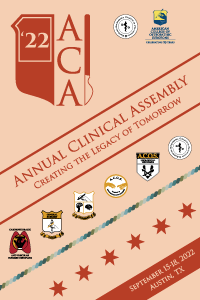Back
General Surgery
GS17 - Gaucher Disease: Case Report of Wrist Trauma
- IS
Iman Squires, D.O.
Medical Student
Nova Southeastern University (NSU-KPCOM)
windermere, Florida, United States
Primary Presenter(s)
Introduction/Purpose:
Gaucher Disease (GD) is a rare autosomal recessive disease that was first described by Gaucher in 1882. The metabolic defect is a deficiency of the lysosomal enzyme glucocerebrosidase resulting in the deposition of glucosylceramide in cells of the macrophage-monocyte system known as Gaucher Cells [1, 2]. Systemic accumulation of these lipid engorged cells results in numerous pathologic complications one of which is bone disease [3].
We present the case of a patient with a rare variant of GD who sustained a distal radial and ulnar fracture after a fall resulting in four surgical corrective procedures after experiencing protracted healing. This case presentation is aimed at increasing awareness of the common skeletal complications of this rare disease.
Methods or Case Description:
A 52-year-old Ashkenazi female with a history of Gaucher Disease sustained distal ulnar and radial fractures after a fall. She initially underwent an open reduction and internal fixation (ORIF) procedure.
Outcomes:
Conclusion:
Gaucher Disease (GD) is a rare autosomal recessive disease that was first described by Gaucher in 1882. The metabolic defect is a deficiency of the lysosomal enzyme glucocerebrosidase resulting in the deposition of glucosylceramide in cells of the macrophage-monocyte system known as Gaucher Cells [1, 2]. Systemic accumulation of these lipid engorged cells results in numerous pathologic complications one of which is bone disease [3].
We present the case of a patient with a rare variant of GD who sustained a distal radial and ulnar fracture after a fall resulting in four surgical corrective procedures after experiencing protracted healing. This case presentation is aimed at increasing awareness of the common skeletal complications of this rare disease.
Methods or Case Description:
A 52-year-old Ashkenazi female with a history of Gaucher Disease sustained distal ulnar and radial fractures after a fall. She initially underwent an open reduction and internal fixation (ORIF) procedure.
One month later imaging again revealed a displaced ulnar fracture that required a fixation revision.
Three months later she continued to experience pain and was referred to a hand specialist.
On presentation her wrist was fixed in
pronation with finger stiffness, dorsoulnar sensory nerve hypersensitivity and carpal tunnel syndrome and the decision was made to undergo a third surgical procedure.
Pre-operative CT radiographic findings revealed a healed distal radius and incomplete healing of the distal ulnar fracture.
Intraoperatively, it was found that none of the fractures were healed as well as significant malposition and comminution of the distal radius with soft fatty tissue infiltrating the intramedullary canal and fracture fragments.
Additionally, there was distal ulna complete non-union with significant incongruity of the distal radial ulnar joint.
Due to the patient’s condition and the low quality of the bone secondary to her Gaucher’s disease, surgical options were limited.
The distal ulna was resected, radial plate replaced and placement of a cancellous bone graft.
The patient also underwent carpal tunnel release and neurolysis of the median and ulnar nerves.
Outcomes:
Postoperatively, her range of motion improved, she received occupational therapy and application of a bone stimulator.
Unfortunately, in follow up at nine months she had developed interosseous membrane heterotopic ossification, a decrease in her pronosupination range and return of the ulnar-sided hypersensitivity.
○ This required excision of the heterotrophic ossification and dorsoulnar nerve neurolysis procedures.
Presently, at her latest follow up, her range of motion and hypersensitivity have significantly improved.
Conclusion:
- Gaucher’s Disease is the most common lysosomal storage disease [1,5]. Its overall incidence is approximately 1:40,000
- High prevalence rate among Ashkenazi Jews [5].
- The gold standard for diagnosis is detection of low enzymatic activity of b-glucocerebrosidase of the peripheral blood and decreased bone mineral density [1].
- The most common signs and symptoms are [5]:
- Splenomegaly (95%)
- Hepatomegaly (87%)
- Bone Disease (81 %)
- Thrombocytopenia (50%)
- Bone involvement to include [4]:
- Acute Bone Crisis
- Osteopenia
- Osteonecrosis
- The most debilitating feature which progresses over time.
- The progressive accumulation of glucosylceramide:
- Within the bone marrow, causes marrow expansion resulting in intraosseous pressure and vascular occlusion, leading to infarction [1].
- Intracellularly, promotes pro-inflammatory processes such as the cytokines interleukin IL-1, IL-6, IL-10 and tumor necrosis factor which alter osteoclast and osteoblast activity [1].

